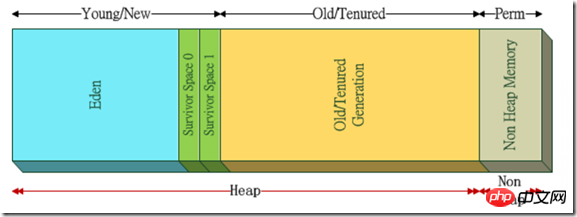
Garbage collection is a big knowledge point in JAVA, and it is also a famous knowledge point. After all, JAVA always brings garbage collection when it claims to be advanced. As a result, it has become a frequent visitor in interviews. The interviewer often asks you to explain what garbage collection is and what its principles are. Of course, although, and definitely, the interviewer who asked you about garbage collection, 99% only knows a little bit about it. When the interviewer asks you what is the garbage collection mechanism, you should ask in a serious manner: Which VM are you asking about the garbage collection mechanism?
Because the concepts and algorithms involved in garbage collection are complex, if you want to understand all the details, you will definitely lose more than you gain. However, if we master the following outline of the garbage collection mechanism, I believe you will not lose points in most interviews.
1: What is garbage?
For example, if you no longer use an object, it is garbage, for example:
public void test01(){
User user = new User();
//...
}
After the test01 method is executed, the user object has no use, then it is garbage.
2: Why do we need garbage collection?
We know that objects are stored on the heap, so how big is the heap? Although it can be adjusted through command parameters, usually under 32-bit systems, the Java heap size is set at 2 GB, 500 MB is allocated to the new generation (YoungGen), and 1.5 GB is allocated to the old generation (OldGen) space. Even if it is 64-bit, think about how much hardware memory our PC can have.
So, all useless garbage is recycled to make room for other objects.
3: JDK’s default HotSpot VM garbage collection mechanism
1: Classification of heap memory
To understand this mechanism, you must first understand the classification of heaps. Yes, we only know that objects exist on the heap, but we don’t know that the interior of the heap is also divided into several spaces, as shown in the following figure:

Young/New Generation New Generation
It is internally divided into Eden and two Survivor Spaces. All newly created objects will be allocated to the new generation.
Old/Tenured Generation Old Generation
The old generation is used to store objects that are still alive after several garbage collections in the program. Object
(PS: Permanent Generation non-heap memory, used to store static files, such as Java classes, methods, etc. The persistent generation has no significant impact on garbage collection. )
2: Recycling order
The execution order of each space is as follows:
Most of them have just The created objects will be stored in the Eden space.
After the first GC is performed in the Eden space, the surviving objects are moved to one of the survivor spaces.
After that, after GC is executed in the Eden space, the surviving objects will be accumulated in the same survivor space.
When a survivor space is saturated, surviving objects will be moved to another survivor space. The saturated survivor space will then be cleared.
After repeating the above steps several times, objects that are still alive will be moved to the old generation.
4: Garbage collector and recycling algorithm
Both types of generations have their own Collector, each collector uses a different algorithm. Remember, for beginners, we don’t need to master every algorithmic principle.
Collectors used by the new generation collector: Serial, PraNew, Parallel Scavenge
Collectors used by the old generation collector: Serial Old, Parallel Old, CMS
Others The corresponding algorithm is as follows,
Serial collector (copy algorithm)
New generation single-threaded collector, marking and cleaning are both single-threaded, and has the advantage of being simple and efficient.
Serial Old Collector (marking-collation algorithm)
Old generation single-threaded collector, the old generation version of the Serial collector.
ParNew Collector (Stop-Copy Algorithm)
The new generation collector can be considered as a multi-threaded version of the Serial collector. It has a better performance in multi-core CPU environments. Serial performs better.
Parallel Scavenge Collector (Stop-Copy Algorithm)
Parallel collector pursues high throughput and efficiently utilizes the CPU. The throughput is generally 99%, throughput = user thread time/(user thread time + GC thread time). It is suitable for scenarios such as background applications that do not require high interaction response.
Parallel Old collector (stop-copy algorithm)
The old generation version of Parallel Scavenge collector, parallel collector, throughput priority
CMS (Concurrent Mark Sweep) collector (mark-sweep algorithm)
High concurrency, low pauses, the pursuit of the shortest GC recycling pause time, relatively high CPU usage, fast response time, short pause time, multi-core CPU choice to pursue high response time
5: When will garbage collection run?
There are two types of garbage collection, Scavenge GC and Full GC.
When a new object is generated and fails to apply for space in Eden, Scavenge GC will be triggered. At this time, garbage collection will be performed on the new generation.
When the old generation (Tenured) is filled, the persistent generation (Perm) is filled, System.gc() is explicitly called, and the Heap's allocation strategy for each domain changes dynamically after the last GC, execute Full GC.
Note that no matter what kind of recycling it is, it does not mean that all garbage will be recycled, but that a certain amount of garbage will be removed within a period of time based on the algorithm's own judgment. This time and amount we Unknowable.
The above is the garbage collection mechanism that you must know.
The above is the detailed content of JAVA garbage collection mechanism. For more information, please follow other related articles on the PHP Chinese website!




